Polishing prose so it sparkles
We’ve been talking about the editing process. We started at 30,000 feet looking at the big picture. Now we’re on terra firma.
In my book The Thong Principle: Saying What You Mean and Meaning What You Say, I discuss the various types of editing – and why they are all essential. For many of us, editing is synonymous with copyediting.
Copyediting is like minor surgery. The impact can be significant, but structural changes and in-depth revisions are not necessary (or have already been done). This type of editing, the most common for most of what we write, involves editing a document for style, flow, and clarity. It also requires ensuring a consistent tone and pacing. Publishers often call it line editing.
Editors Canada offers the following overview for stylistic editing, or line editing. For many writers, this is what they’re doing when they are copyediting. Ultimately, it doesn’t matter what we call it as long as we do it.
Stylistic Editing
Editing to clarify meaning, ensure coherence and flow, and refine the language.
It includes:
– eliminating jargon, clichés, and euphemisms
– establishing or maintaining the language level appropriate for the intended audience, medium, and purpose
– adjusting the length and structure of sentences and paragraphs
– establishing or maintaining tone, mood, style, and authorial voice or level of formality
What’s A Copyeditor To Do
Here are six areas of focus to help ensure your writing resonates with your audience and achieves your purpose. When you look closely at these elements, you sharpen the writing and the plot. Readers are more likely to be carried along by your words. There will be no head scratching and no rereading to make the meaning is clear.
Check for:
1. CLARITY
Look to see if you are using:
– Long sentences that could confuse readers
– Big words readers could stumble over
– Uncommon words that will furrow their brows
– A tone that distracts or conflicts with the content
Bottom line: Make sure the meaning of what you write can’t be misinterpreted.
2. TRANSITIONS
– Between sentences
– Between paragraphs
– Movement in time, place, subject
Transitions aren’t usually complex. They flow naturally moving readers through prose with short, everyday words like “however,” “so,” and “then.”
3. CONCRETENESS
– Facts and figures
– Specific language
– Action verbs
– Active voice
Readers want us to paint a picture for them – one they can see and one they can believe in.
4. REPETITIVENESS
– Are specific ideas repeated unnecessarily?
– Are words used more than once in sentences? In paragraphs?
Tip: Avoid summarizing. Readers don’t require it, and it slows them down.
5. COMPLETENESS
– Are the 5Ws and how answered?
– Are there any unanswered questions when there shouldn’t be?
Have you emphasized the most important question: Why?
6. FLOW
– Does the content make sense
– Do the words move smoothly
Find out for yourself. Read your writing out loud.
Would love to hear about your editing challenges — and successes.


 What is slang anyway and why does it work? The dictionary defines slang as: “a language peculiar to a particular group, an informal nonstandard vocabulary composed typically of coinages, arbitrarily changed words, and extravagant, forced, or facetious figures of speech.”
What is slang anyway and why does it work? The dictionary defines slang as: “a language peculiar to a particular group, an informal nonstandard vocabulary composed typically of coinages, arbitrarily changed words, and extravagant, forced, or facetious figures of speech.”




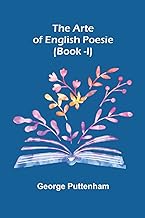
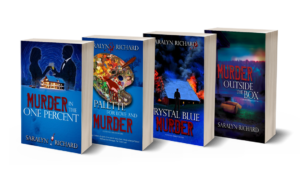

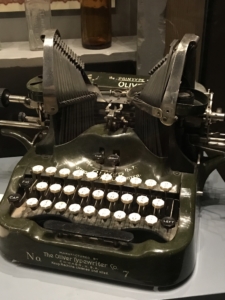 In 1962, my mother registered me for a writing class that was offered in summer school after the eighth grade. Only one other girl signed up, so the class was cancelled.
In 1962, my mother registered me for a writing class that was offered in summer school after the eighth grade. Only one other girl signed up, so the class was cancelled.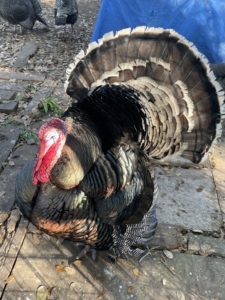
 I began writing suspense/mysteries in the 80s. My father was a criminal defense lawyer, (and later a judge), so I’d been around the law since I was little. I had been a probation officer and was at that time a criminal and family lawyer. Crime, I knew about. By the way, I heard that not long after the aforementioned editor rejected my novel, she died. Just so you know, I didn’t kill her.
I began writing suspense/mysteries in the 80s. My father was a criminal defense lawyer, (and later a judge), so I’d been around the law since I was little. I had been a probation officer and was at that time a criminal and family lawyer. Crime, I knew about. By the way, I heard that not long after the aforementioned editor rejected my novel, she died. Just so you know, I didn’t kill her.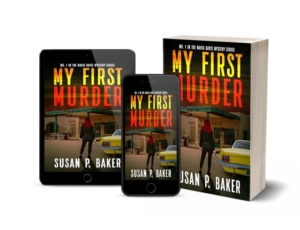




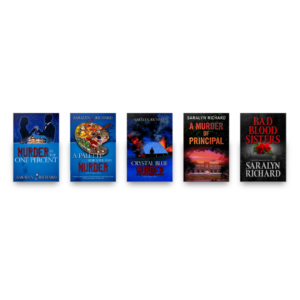
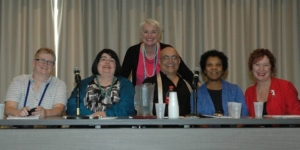 The Arts Are For Everyone! by Linda Rodriguez
The Arts Are For Everyone! by Linda Rodriguez
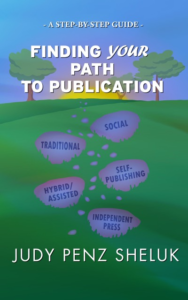 I’m delighted to welcome Judy Penz Sheluk as my guest to talk about her new release: Finding Your Path to Publication: A Step-by-Step Guide. Because I’ve loved her two fiction series: The Glass Dolphin mysteries and the Marketville mysteries, I know this will be a valuable non-fiction tool for writers. See you next month! —Debra H. Goldstein
I’m delighted to welcome Judy Penz Sheluk as my guest to talk about her new release: Finding Your Path to Publication: A Step-by-Step Guide. Because I’ve loved her two fiction series: The Glass Dolphin mysteries and the Marketville mysteries, I know this will be a valuable non-fiction tool for writers. See you next month! —Debra H. Goldstein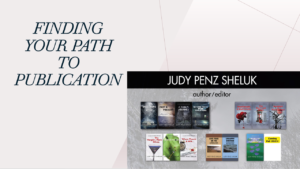 published and publishing options than whether I (or anyone else) had succeeded at NaNoWriMo. That led to the librarian asking if I might be willing to prepare a presentation on the topic. I remembered how much I’d learned since signing my first book contract in 2014, and not all those lessons came easy. In fact, some of them were downright painful.
published and publishing options than whether I (or anyone else) had succeeded at NaNoWriMo. That led to the librarian asking if I might be willing to prepare a presentation on the topic. I remembered how much I’d learned since signing my first book contract in 2014, and not all those lessons came easy. In fact, some of them were downright painful.